Features of a Yucatan Colonial Home
Many people come to Merida to investigate and invest in the real estate market these days... what's the attraction? While there are many kinds of properties to choose from, including modern condos and beach homes, probably the most charming properties are the old colonial buildings in the historical center, with lovely European architecture, antique floor tiles and high beamed ceilings that can be renovated into truly special homes. There are old colonial buildings in many large cities in Mexico, but many of the best values are found here in Merida. Yet, before you buy that fixer-upper and begin renovating, it's good to know a little bit about the architecture here, and the process of renovation.
Typical Yucatecan homes are constructed with stone (if they are more than fifty years old) or a combination of stone and concrete block. The old stone walls, which are a combination of rough-hewn limestone and plaster are called mamposteria (mom-pos-tare-EE-uh). Most colonial homes in the historic centro of the city have mamposteria walls either as exterior walls or throughout the entire building. Concrete block walls are also common, especially with newer buildings. Houses built of red brick or tabique (tah-BEE-kay) are rare, and houses built with wood are even more scarce. There may have been more homes built of wood in the city originally, but few if any are still standing.
The roof of a colonial building, called a techo (TAY-cho), is almost always flat, and slightly sloped to provide for runoff. Originally, roofs were laid down first with heavy wooden bigas (beams), and then covered with tile and concrete. But in the 19th century, iron bigas were used. These were actually railroad track used for the small scale henequen trucks. To guard against rain and leaks, the roof is then covered with impermeabilizante (em-perm-ay-ah-beel-ay-SAN-tay), an latex-based, thick waterproof paint. This is often laid down over a layer of very thin paper or cloth for added protection. A roof needs a new layer of impermeabilizante every three or four years in the Yucatan.
Traditionally, stone or block walls are covered first with a two layers of hand-applied plaster, a rough coat and then a fine coat. For an authentic restoration, several coats of cal paint are applied. This local style of paint is mixed on site, and consists of a colored powder, white cal powder - essentially cement - and a dash of white glue as a binder, creating a paint similar to those used in frescos. It is brushed on in manos (literally "hands"), as in dos manos or two coats of paint. Because the paint is mixed locally, people find it easy to be creative with color. As as you look around the neighborhoods of Merida, you can see the results of their creativity. Cal paint will eventually show discoloration from moisture, and may eventually flake off due to excess moisture in the stone wall beneath it. Exterior walls painted with cal often need to be repainted every other year, and interior walls a little less often. You can paint with more durable types of paint, but these paints do not necessarily stick to the stone walls any better than cal in this climate. And shiny enameled walls look pretty out of place here in the Yucatan.
After the plaster and sometimes even after the paint is applied to the walls, the plomero (plumber/electrician) applies his craft. This often requires digging out channels in the stone or block walls for wiring or pipes. Electricity and plumbing were new-fangled technologies when they arrived long after the original houses had been built, so most electricians and plumbers are trained to install these amenities after the structure is completed. Most old homes will also have at least two hamaquero (hah-mah-KAY-row) installed in most rooms. These are loops of metal designed to receive hammock hooks. If your home doesn't have any, don't worry. Hamaqueros can easily be installed with a little elbow grease and cement. New ones can be found in the local mercado downtown. Older-style hamaqueros and the hooks that go in them can often be found in local antique stores or made to order.
Another common feature of colonial homes in the Yucatan are the high ceilings. Ceilings of 18 and 20 feet are not uncommon and some can be even higher. Besides giving the rooms and buildings a sense of spaciousness and grandeur, the high ceilings allow the heat of the day to rise away from the inhabitants. Combined with the thick stone walls and windows covered during the day by heavy wooden or metal doors, this serves to keep the interior of these old buildings as cool as possible when it is impossibly hot outside.
Living in the Yucatan is very much an indoor/outdoor affair. Most houses in this part of the world have both indoor courtyards (patios) and gardens in the back of the house. The jardin (har-DEEN) often has a pool that is kept empty except for when it is about to be used. Many houses fill their pools from wells drilled on the property, and pools often were not built with modern filtering equipment. So the pools were filled when they were used, and then emptied until next time. Of course, modern pool equipment is readily available now in Merida and is more commonly used in renovations.
Overhanging the patio or an outdoor terrace is a tejeban (TAY-ha-bon), a slanted roof usually built from hard-wood beams and covered with red tile. The tejeban allows you to sit outside without sitting in direct sun or rain. Older tejeban in colonial homes can sometimes still be found with the original french tiles imported here in the 19th Century.
A distinguishing feature of a Yucatecan home that everyone notices right away are the colorful tile floors. These special floor tiles, known as pasta or mosaicos (mo-ZAHY-koz), are made here from concrete, colored powder and hydraulic pressure. They are laid down with a matte finish and polished in place after installation. You can read more about these tiles in our feature story about floors. The tiles can be chosen from existing colors and designs, or you can pay to have a mold created in a design of your choice. Either way, the result is a stunning floor for a reasonable price. If you are lucky enough to find an old colonial home with original floors, do not despair if the floor looks ugly and worn. Most of the time, these tiles can be repolished and will look as good as new.
Many old buildings still have original stenciled designs painted on the walls. Some of these are painted to resemble wall paper that would have peeled off in less than a season of tropical weather. Painting these is a skill that is still available here from local artists, so new designs can be painted on your walls, or old ones can be copied and renovated.
Houses in the Yucatan have very few windows. Most openings between interior and exterior spaces are doors. These doors usually have smaller doors inserted into them, above a typical person's sight-line, so that the small door can be opened for fresh air without giving up privacy. Original hardwood doors in old colonial homes are very valuable and can be refinished to be restored to their original beauty. A skylight, or tragaluz (TRAH-gah-loos), is easy to install in a ceiling and is another solutions for getting light into a dark interior room.
An original Yucatecan kitchen is often just open concrete shelves, sometimes covered with or edged with fired tiles. In this humid climate, before there was air conditioning (and even now, if you don't want to be running your air conditioners all day and night), it was best to leave shelves open so that air can circulate.
These are just some of the more obvious elements of a typical colonial home in the Yucatan. In our next article, we'll go under the surface to look at the typical plumbing and electrical solutions in this part of the world. We've been here for over four years now, and seen a lot of homes built or renovated. We've learned that often the building habits that did not originally make sense to us have developed for a reason. And it is best to learn how things are done here, and learn the reason why they are done this way, before you try to change things. More often than not, we've concluded that the great innovation we had in mind just didn't work in the tropics or with the chosen materials. Local craftsmen have been building houses here for over four centuries. The most successful renovations are informed by their history and traditions.




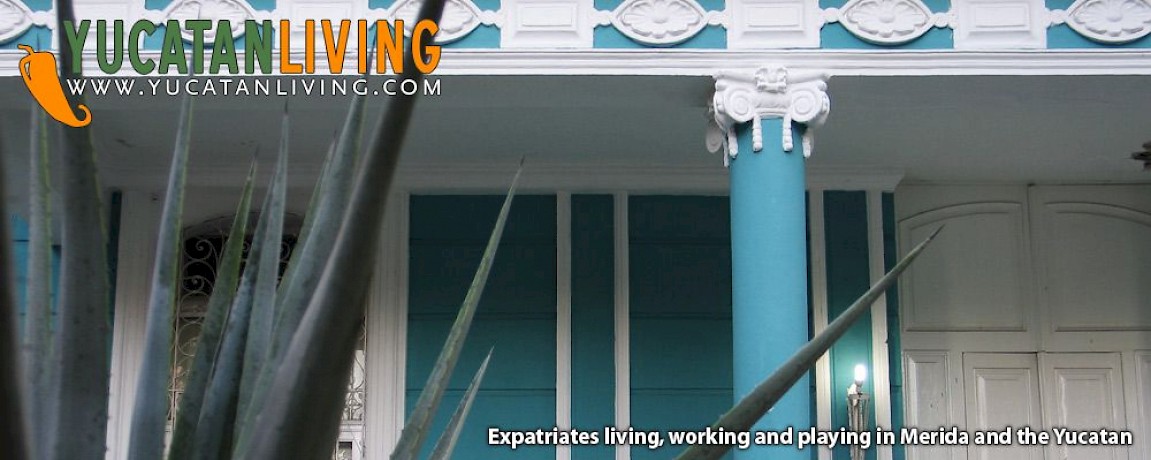


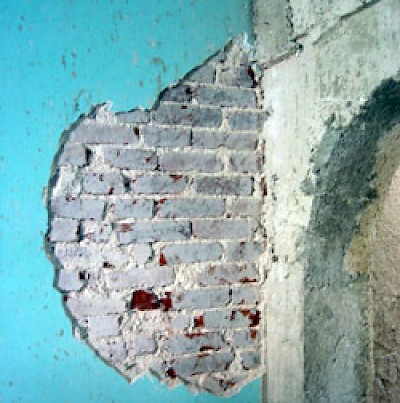
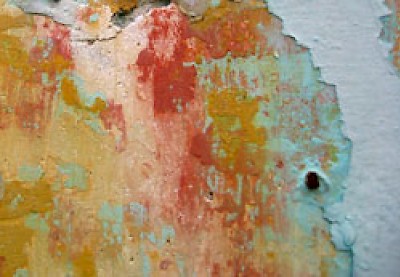
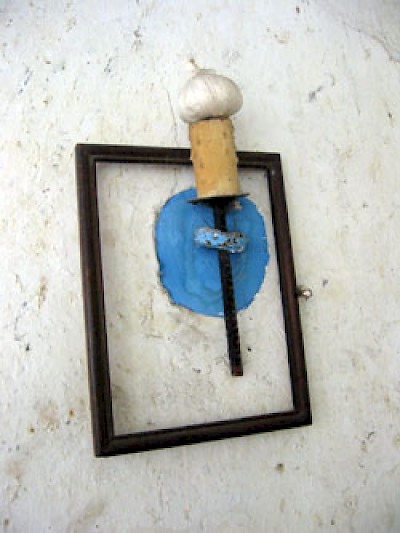
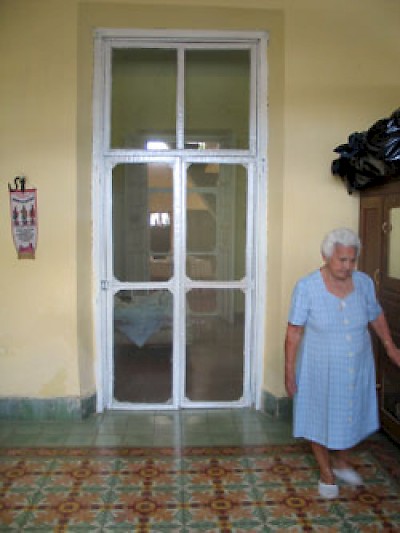
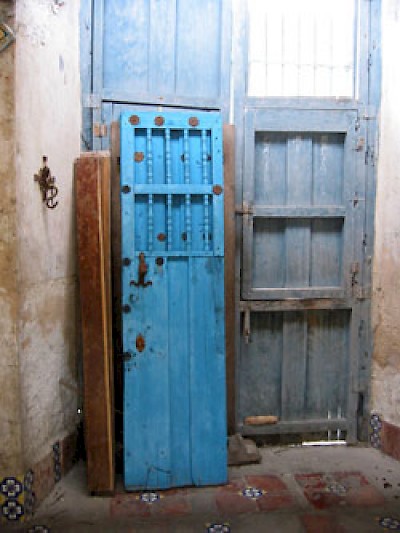

Comments
Working Gringos 18 years ago
Michael,
We'll be honest with you. All the colonial homes we know have some leaching through the paint on the walls. This is an effect that so many faux finishes in the U.S. are trying to achieve. When we first came to Merida, we thought the walls looked a lot like the ones in old homes in Venice, Italy, which we found charming.
That said, there are ways to minimize (or enhance) this effect, if you wish. Let's start with terminology. We don't have adobe walls here, which are basically made of dried mud. The original walls in Yucatan colonial homes are made of limestone and mortar, and called mamposteria, as described in the article above. Moisture from humidity in the air can be absorbed by these walls and later seep out through the paint, causing discoloration or peeling. Original cal paints discolor, creating a "real" faux finish, but vanilica and modern paints peel, which creates quite a mess.
So the first and simplest answer is to use cal paint and re-paint your walls every year or two. Most of the leaching and discoloration are near the bottom of the walls because water flows downhill. When visiting many colonial homes, you may notice that some owners have painted the bottom two to four feet of their walls a different color (usually darker) than the top part of the walls. This is traditional, but also practical: you only need to repaint (or overpaint) the bottom part of the wall every year or two where the leaching occurs, which costs very little using cal paint and a local painter.
As your friends suggest, if it has been a long time since the problem walls were plastered, then you might want to consider removing all the old plaster from the mamposteria and replastering. You can have the plaster mixed with a sealer or have the sealer applied to the new plaster with a primer coat of paint. This won't completely eliminate the leaching, but it will slow it down considerably and perhaps result in a more subtle finish.
Another approach we've seen is to tile the bottom two to four feet of wall using modern ceramic or Talavera tile. This can be rather costly, but it certainly eliminates any problems with paint and can look quite stunning.
The most extreme solution is to replace the walls entirely with cinderblock, being sure to apply impermeabilizante (see article, above) to the foundation and first row of block. You may want to rent another house to live in while this project is underway, however. :)
Reply
Working Gringos 18 years ago
Bettye,
On approach we would use is to sketch or photograph a pattern we like and take it to a rotulo painter. He could create the stencil and paint it on your walls. Don't know what a rotulo painter is? See:
http://www.yucatanliving.com/art/rotulos-painting-mexican-art.htm
Reply
Michael 18 years ago
I've moved into a wonderfully restored colonial house, but some of the inside walls need attention. As you mentioned, the walls are painted with plaster. Some of the walls, though, are sweating at the bottom. I guess the adobe is abosrbing moisture, even though some of the walls with this problem are interior ones. Some locals suggest gouging out the damp parts and replacing it with concrete. I've looked online for articles that address the problem, but I haven't found anything. Can you suggest a proper fix or a source.
I'm glad I found your site. You're doing a great job. By the way, the owner of the house I moved into, said he was waiting for an American to buy the house because he knows many of us love the colonial architecture. The owner refused offers from locals because they planned to eliminate the house's colonial features and "modernize" it. That's the fate of so many houses around here.
Anyway, please let me know if you have any info about how to maintain the adobe walls.
Reply
Bettye 18 years ago
Any sources for stencil patterns in Merida?
Some of the designs are quite lovely but I'm not aware of any contemporary source.
Reply
willy 18 years ago
Merida is a very nice place. I myself am trying to find a place to fix up. About the craftsmen in Mexico, yes there can be some very good ones. But like always you have to be careful with the Mexicans. They can be some of the most dishonest bunch you'll ever meet. You have to find someone that is recommended by others and even then you have to watch them carefully to keep them honest. Also make sure you pay them Mexican wages.
Reply
Mortgages in Merida, Yucatan 18 years ago
[...] Features of a Colonial Home [...]
Reply
Jerry 19 years ago
Hi W.G., My twenty freinds and I just got back from Merida and Yes! MERIDA is a captivating City. We all have family in Merida and plan on remodeling our homes and buying new ones to bring them back to their glory. We plan on returning in December to start our projects. Cesar, I cant agree anymore with you about moving in a heart Beat. Especially when you heart was left behind.
Reply
Cesar 19 years ago
I've visited Merida countless times and that city never stops captivating me. If I could earn there what I earn in the States, I would move to Merida in a heartbeat.
Reply
jim Peterson 19 years ago
Good morning, W.G...Everything you've said so far is true. Especially about a Mexican saying "no".
Shutters were, at one time common here. All the really old houses had them, but it looks like when it came time to replace or repair, they were replaced with steel shutters. I have,I think, three openings that are now steel, that I have to replace on the outside, and one inside. Also, in your lower photo, one shutter shows a crude steel latch; I have exactly the same type here on all the windows, so that tells me that this type door and window were common all over Mexico.
Reply
Working Gringos 19 years ago
Hola Jim! In our experience, it's not difficult to find bad workers anywhere, but it's easier to find good craftsmanship in Mexico. Many more things are made by hand using traditional methods here, compared to in the States where most things are made by an industrial process, which means they end up looking like you bought them at WalMart. Having said that, if you ask a local craftsman to make something non-traditional, he'll always give it a try, (has a Mexican ever told you "no"?) but the result may not turn out the way it should. Are shutters a common feature of homes where you live?
Reply
jim Peterson 19 years ago
Hey, Working Gringos...Thanks for the help. I've been wanting to go to Yucatan, and your information is a good excuse.
I agree with you about the Mexican craftsman. They can be amazing. They can also be amazingly bad. Last year, I had the best carpenter in town build me a shutter; it would make you shudder to look at it. It looked like something your 8-year-old made for show & tell. How can you tell someone who is proud of their work, that their work stinks? It's still hanging lop-sided in the window. I told him I ran out of money & can't afford more.
Thanks for taking the time to help. I'll be bugging you again come winter.
jim Peterson
Gardnerville Nevada/Bacubirito Sinaloa
Reply
« Back (20 to 31 comments)Next »